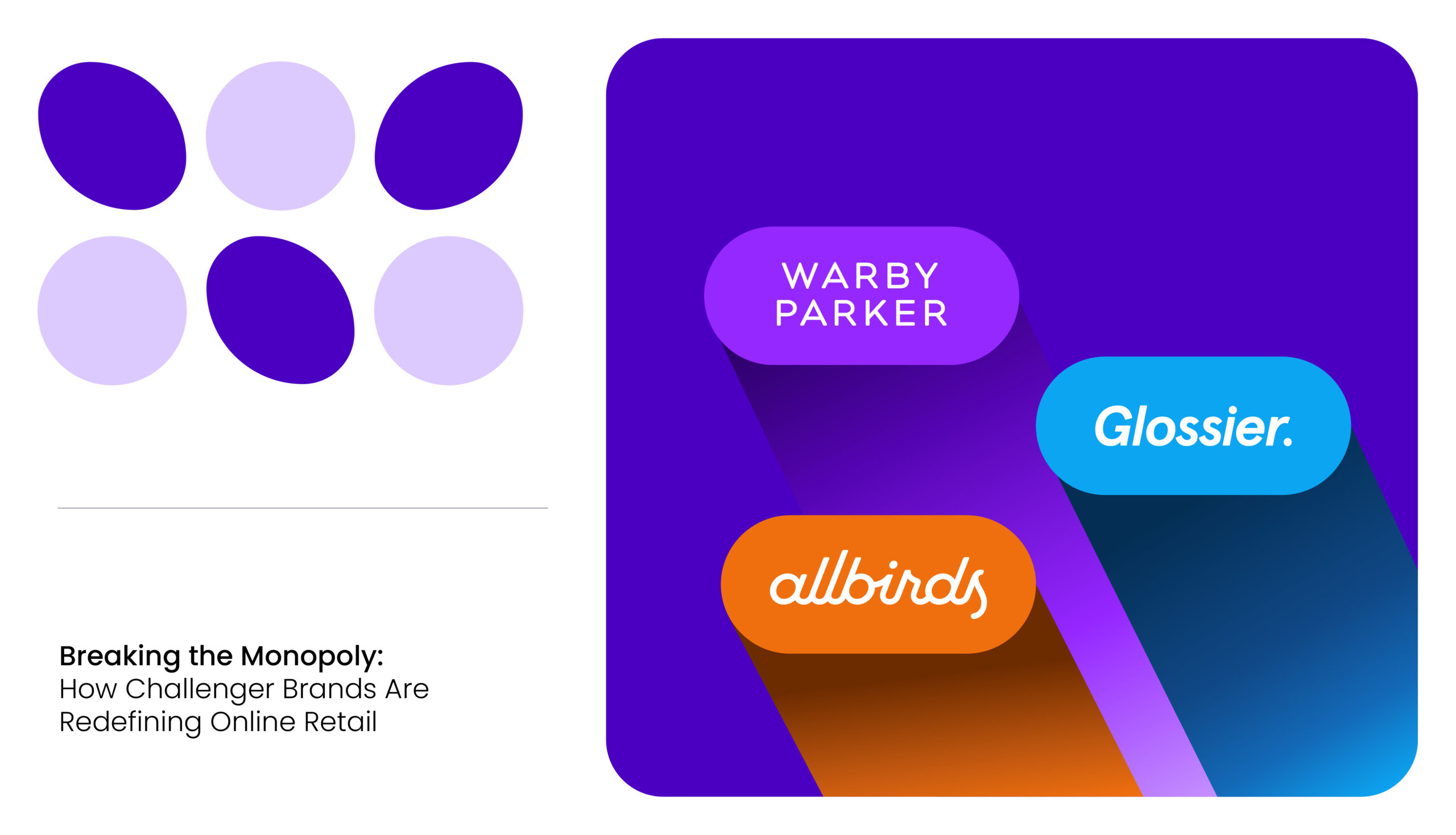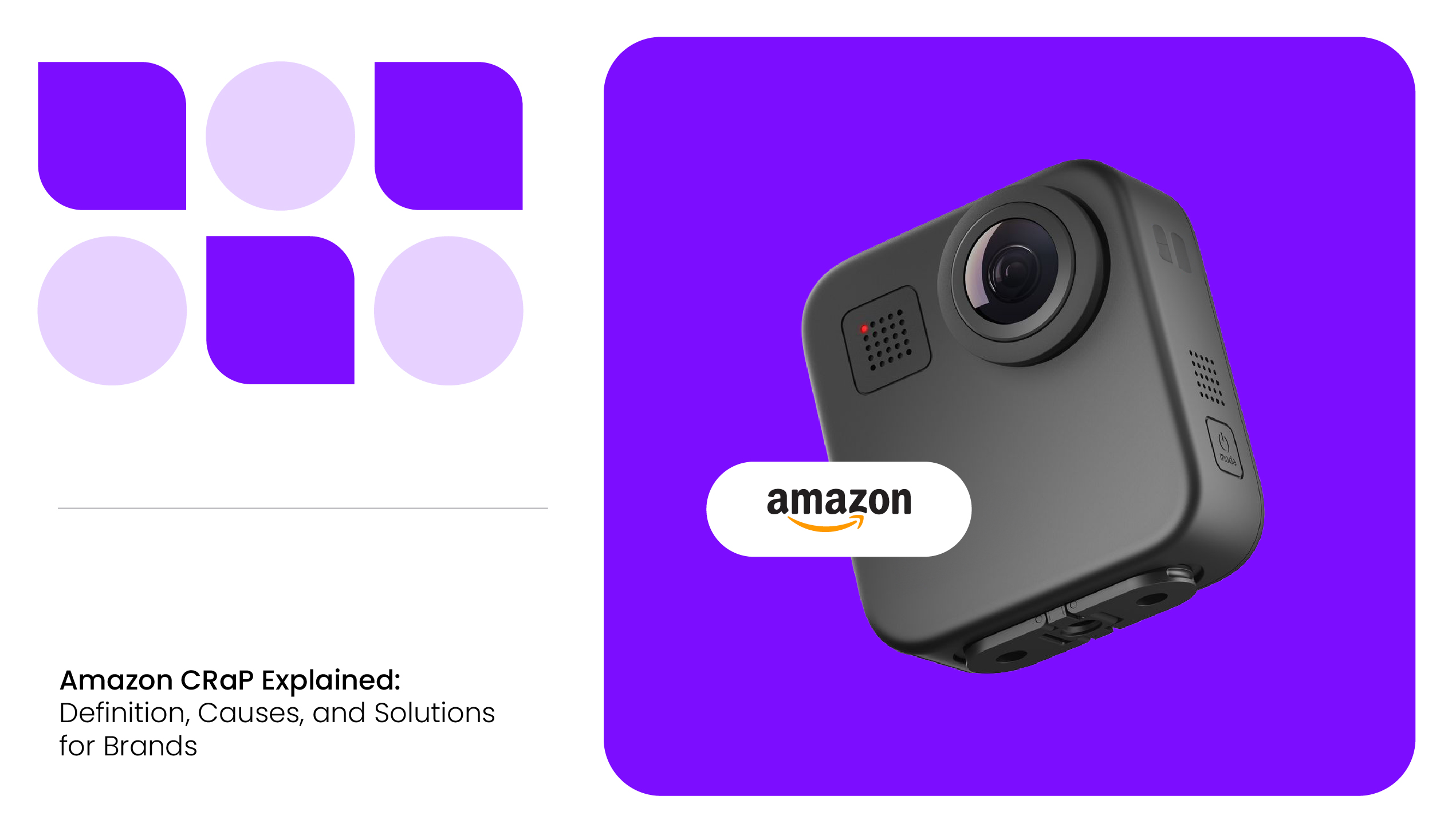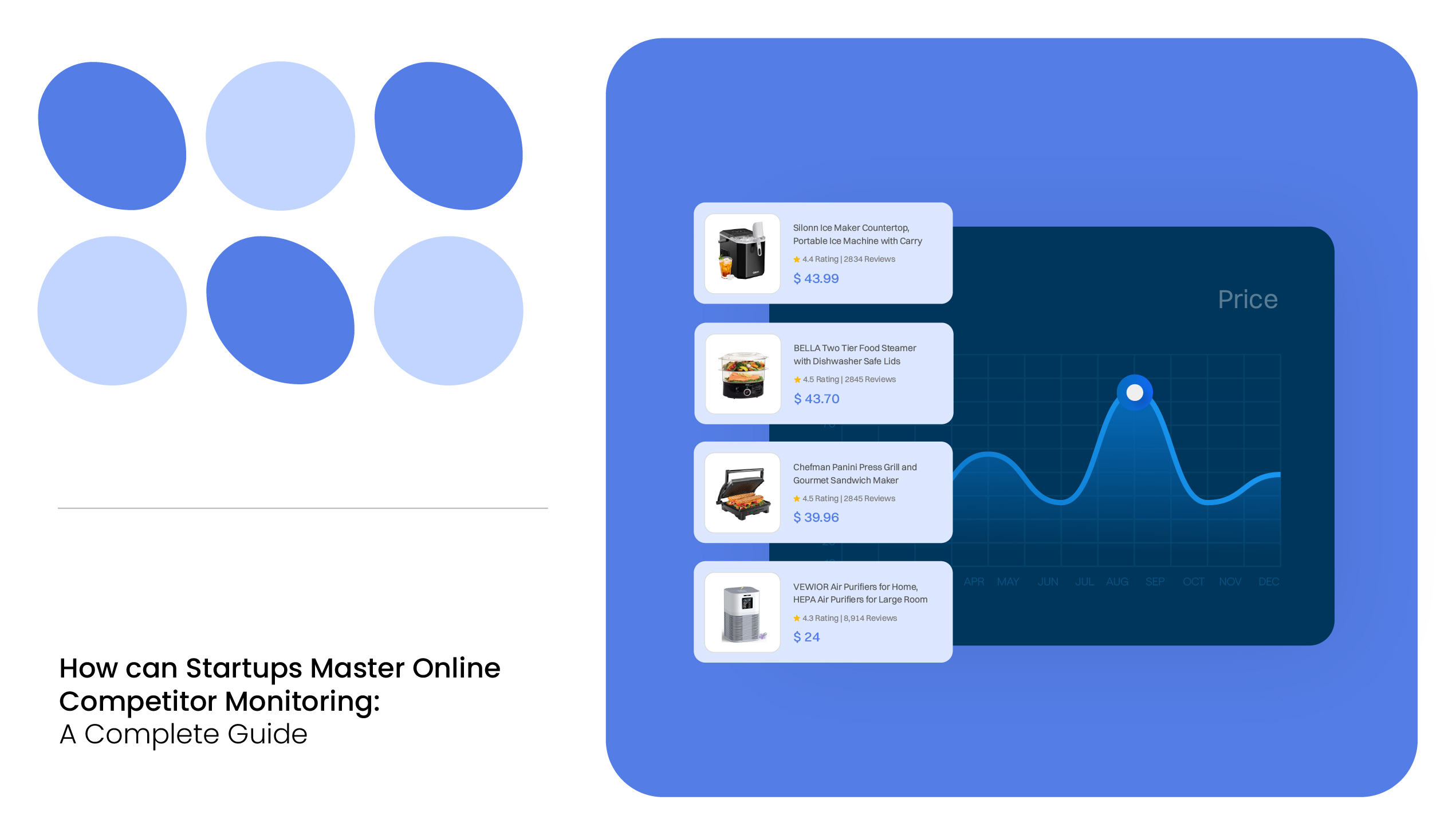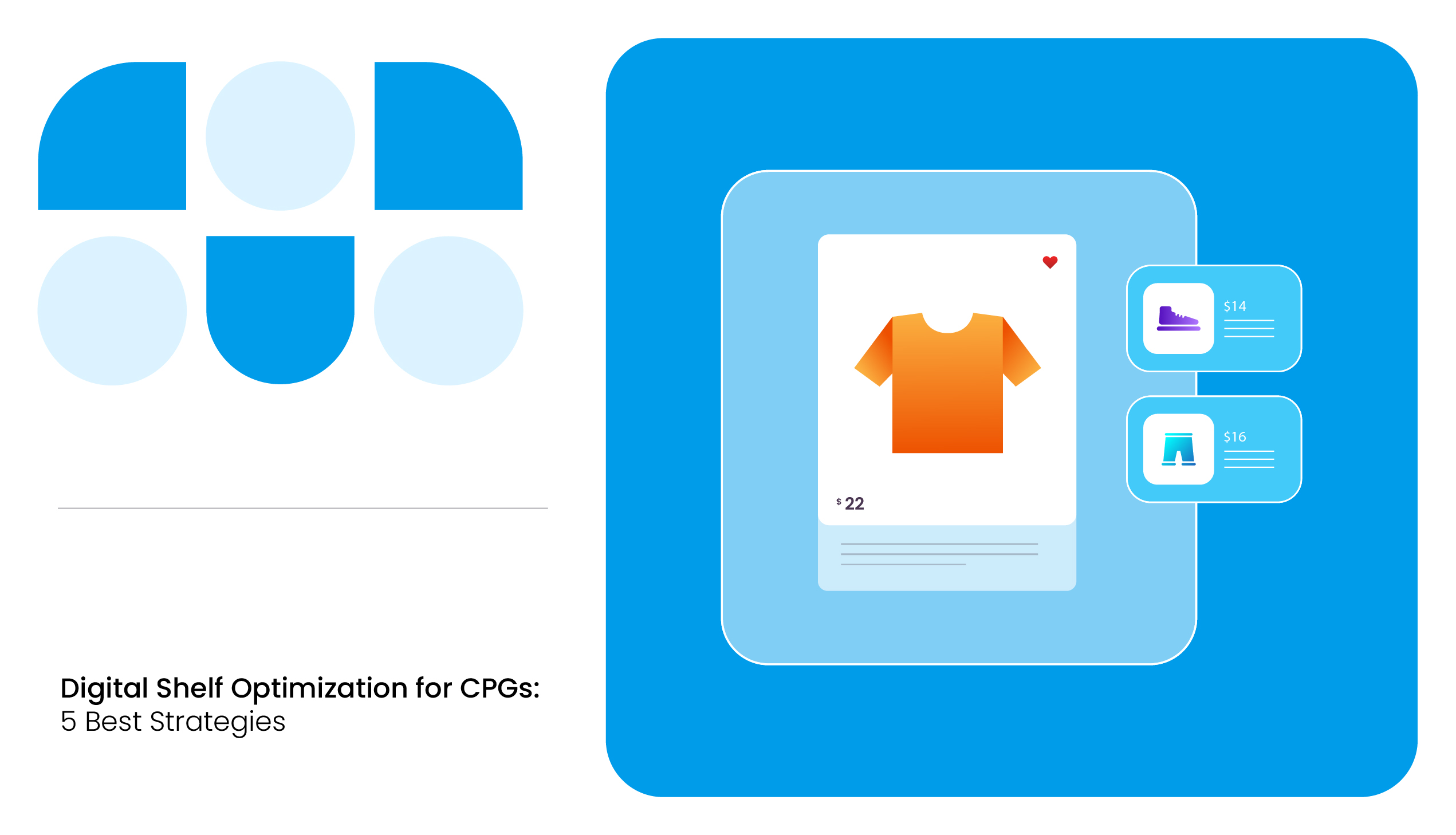Challenger brands are rewriting the rules of business, shaking up traditional industries, and winning over consumers with bold strategies and innovative products.
Unlike market leaders, they don’t rely on massive budgets or long-standing reputations. Instead, they carve out their space by understanding consumer pain points, analyzing data, and moving fast.
But what really sets challenger brands apart is their ability to listen, adapt, and engage directly with consumers, turning real-time feedback into a competitive advantage.
Analyzing customer feedback has never been easier, and using digital shelf analytics software gives brands a better understanding of consumer behavior to offer unique products than traditional brands.
What is a Challenger Brand?
A challenger brand is a company that competes against industry giants not by directly trying to overtake them but by offering something new, different, or better. These brands are disruptors, often targeting inefficiencies, outdated models, or gaps in existing customer experiences.
Key Characteristics of Challenger Brands
- They focus on solving specific problems and addressing pain points better than competitors.
- They move fast, launching products iteratively based on customer feedback analysis rather than waiting for perfection.
- They challenge the status quo, often aligning with social causes or emerging cultural trends.
- Many thrive on e-commerce, social media, and direct-to-consumer (DTC) business models.
- They use storytelling, guerrilla marketing, and influencer partnerships instead of traditional ad campaigns.
When defining challenger brand, it is important to know that they aren’t necessarily the smallest players, nor do they always aim to become market leaders. Instead, they focus on changing the game and rewriting industry norms, forcing competitors to adapt or risk becoming irrelevant.
READ MORE | Interested in knowing how to start an e-commerce business? Check out our blog on E-Commerce Business in 2025: 10 Strategies for Thriving in a Competitive Market.
Examples of Challenger Brands That Changed the Game
Unlike legacy brands that rely on mass advertising and established retail channels, challenger brands use social media, influencer partnerships, and community-driven marketing to build brand loyalty.
They embrace storytelling, transparency, and user-generated content to create authentic connections with consumers.
Glossier vs. Legacy Beauty Brands
Traditional beauty brands focused on celebrity endorsements and retail dominance. Glossier flipped the script by building a community-first, social media-driven brand that listened directly to its customers.
Born from the popular beauty blog Into The Gloss, Glossier created products based on customer feedback and engaged users through user-generated content and influencer collaborations. This approach led to cult-like brand loyalty and made Glossier one of the fastest-growing beauty companies in the US.
Building a brand around community engagement and customer feedback leads to deep loyalty and organic growth.
Allbirds vs. The Footwear Industry
The sneaker industry was long dominated by giants like Nike and Adidas, which focused on performance and hype-driven releases. Allbirds took a different approach, creating sustainable, ultra-comfortable shoes made from eco-friendly materials like merino wool and sugarcane.
With a minimalist design and a commitment to transparency, Allbirds attracted environmentally-conscious consumers and built a reputation for comfort and sustainability. Their success has pushed major footwear brands to rethink their sustainability efforts.
A strong mission and sustainable innovation can create a loyal customer base and drive industry-wide change.
Warby Parker vs. Traditional Eyewear Retailers
For years, eyewear was dominated by luxury brands that controlled pricing through retail monopolies. Warby Parker disrupted the industry by introducing a direct-to-consumer model, offering stylish glasses at a fraction of the cost.
By eliminating middlemen, using a home try-on program, and building a strong online presence, they made eyewear more affordable and accessible. Their commitment to a buy-one-give-one social impact model further strengthened their brand identity.
Here, the challenger brands succeed by simplifying processes, reducing costs, and making products more accessible.

How Can You Build a Challenger Brand by Listening to Consumers?
The most successful challenger brands don’t just disrupt industries; they actively listen to their customers, adapt quickly, and create products and experiences that genuinely address consumer needs.
Challenger brands embrace real-time consumer insights to shape their business strategies. Here’s how they do it:
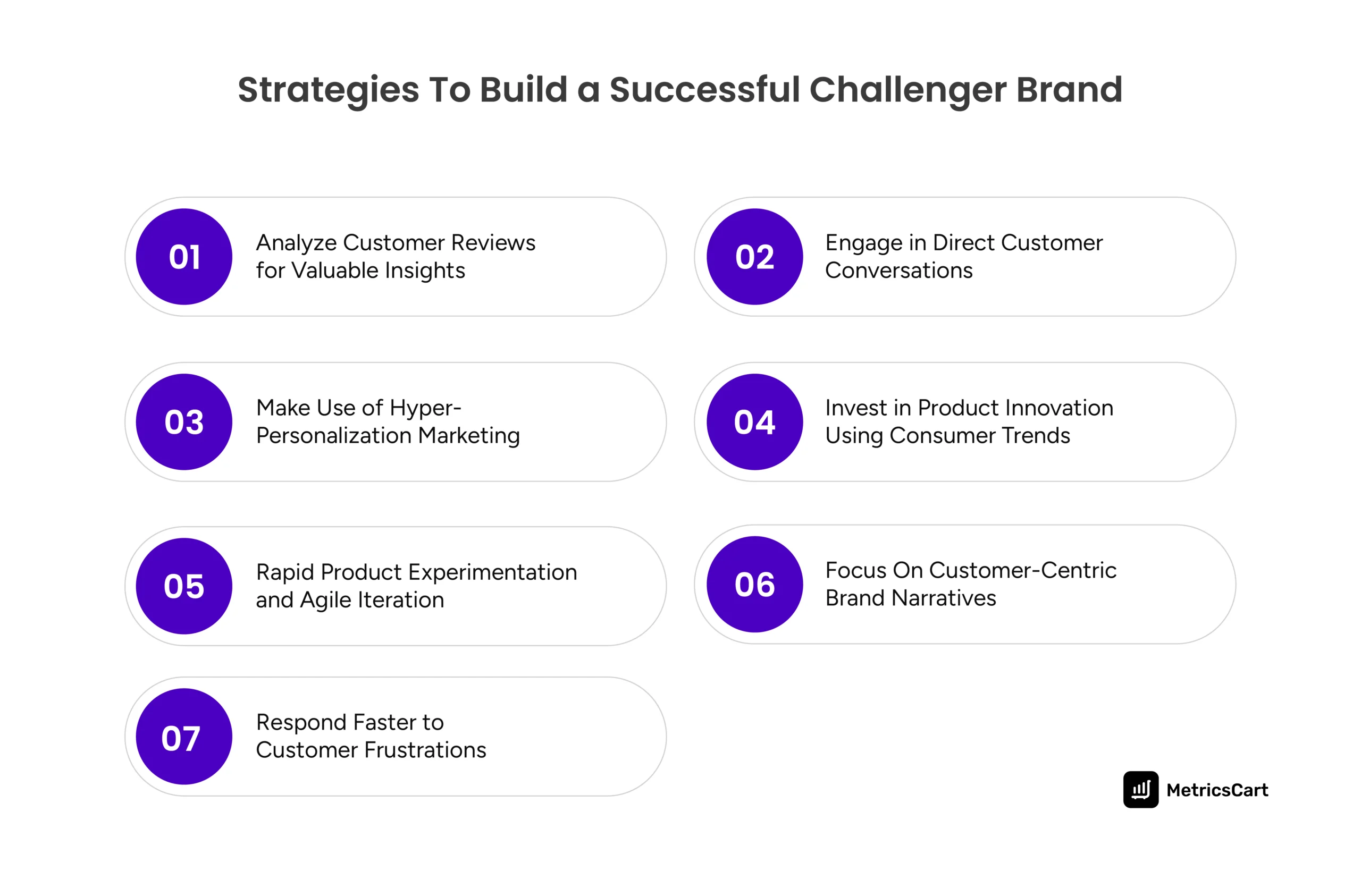
Analyzing Customer Reviews for Actionable Insights
Customer reviews provide unfiltered feedback on what’s working and what’s not. Challenger brands use sentiment analysis and thematic review analysis tools like MetricsCart to track patterns, identify pain points, and refine their products or services accordingly.
For example, a beauty startup may notice repeated complaints about product texture and immediately tweak its formula based on customer input.
Engaging in Direct Consumer Conversations
Challenger brands actively foster two-way communication with their audience. Through social media interactions, community groups, and direct messaging, they gather real-time feedback and build a loyal consumer base.
Brands like Glossier, for instance, have built entire product lines based on consumer-driven suggestions gathered from discussions on Instagram and Reddit.
Using Data for Hyper-Personalization
Unlike traditional brands that use generic marketing, challenger brands embrace first-party data to deliver personalized shopping experiences. By analyzing browsing behavior, purchase history, and user preferences, they create hyper-targeted campaigns that resonate with individual customers, increasing engagement and retention.
Adapting Product Innovation Based on Consumer Trends
Trends evolve fast, and challenger brands move even quicker. They monitor discussions on platforms like Reddit, TikTok, and niche online communities to identify emerging trends before they go mainstream.
By staying agile, they launch products that directly align with current consumer demands, often outpacing bigger competitors.
Rapid Experimentation and Agile Iteration
Instead of spending years perfecting a product behind closed doors, challenger brands take a “launch, test, and refine” approach. They introduce minimum viable products (MVPs), gather customer reactions, and iterate based on real-world feedback. This cycle of continuous improvement keeps them ahead in fast-moving markets.
Creating a Customer-Centric Brand Story
Challenger brands don’t just sell products; they tell compelling stories that align with their audience’s values. By listening to consumer emotions, struggles, and aspirations, they craft authentic brand narratives that resonate deeply.
This approach builds a sense of community and makes customers feel like they’re part of something bigger than just a transaction.
Responding to Consumer Frustrations Faster Than Incumbents
Traditional brands often take months or even years to address consumer concerns. Challenger brands, however, operate with agility. They monitor online discussions, resolve customer complaints swiftly, and pivot strategies in real-time. This responsiveness fosters trust and gives them an edge in decoding the consumer buying process.
READ MORE | Interested to know how ratings and reviews help in product development? Check out our blog on Product Development Using Customer Feedback: Must-Know Tips for Brands.
Conclusion
Challenger brands are reshaping industries, proving that you don’t need a massive budget to make an impact, just a strong brand purpose and a commitment to listening to your customers.
The key differentiator between a successful challenger brand and a struggling one is its ability to listen, adapt, and innovate based on consumer insights. In today’s competitive e-commerce landscape, brands that put customers at the center of their decision-making process will not only survive but thrive.
By using data analytics tools like MetricsCart to analyze customer feedback and offer better product lines than traditional brands, Challenger brands are turning traditional business models upside down.
Get Ahead and Stay Ahead. Unlock E-Commerce Success Now!
FAQ
Challenger brands compete by leveraging data-driven insights, social media engagement, influencer partnerships, and superior customer experiences. They differentiate themselves by addressing gaps in the market and responding quickly to consumer feedback.
Personalization is critical for challenger brands as it helps create a tailored shopping experience. By leveraging first-party data, AI-driven recommendations, and targeted email marketing, brands can boost conversion rates and customer satisfaction.
Challenger brands excel at using social media to connect with their audience, drive engagement, and create viral marketing campaigns. Platforms like Instagram, TikTok, and Reddit are key channels for building brand loyalty and launching new products.
Traditional e-commerce brands can become challenger brands by embracing innovation, refining their brand story, and prioritizing consumer insights. Key steps include adopting agile marketing, leveraging data analytics, and focusing on community-driven engagement.
Customer loyalty is crucial for challenger brands as it reduces acquisition costs and increases lifetime value. Brands that focus on building emotional connections, loyalty programs, and community engagement see higher retention and sustained growth.

